What is 'Zettelkasten', a method created by a German sociologist to create efficient notes?

There are many different ways to write notes, such as making bullet points of important information or highlighting it. The Zettelkasten method of note-taking is a method of managing knowledge by writing down each element on a small piece of paper, rather than managing knowledge in a single notebook. All you need is paper, a pen, and a box to store the paper.
Stop Taking Regular Notes; Use a Zettelkasten Instead
Zettelkasten — How One German Scholar Was So Freakishly Productive
https://writingcooperative.com/zettelkasten-how-one-german-scholar-was-so-freakishly-productive-997e4e0ca125
Taking notes in a notebook is not only useful for summarizing what you need, but also for quickly jotting down insights and ideas that come to mind by scribbling in the margins. Also, making summaries of books, articles, and papers in a notebook can help you review the knowledge you have learned later. However, Amazon engineer Eugene Yang says that the problem with summarizing ideas in a notebook is that 'the ideas and knowledge on the notebook are scattered, and when you review the notebook, you cannot immediately refer to other related knowledge and ideas.'
Also, if your notebook is digitized, you can search the text to find ideas on other pages, whereas if you use a paper notebook, you have to flip through the pages to find previous ideas, or even worse, you might forget other ideas you wrote in your notebook.

Zettelkasten, recommended by Yang, is a combination of 'Zettel' meaning note and 'kasten' meaning box, and is said to have been invented by German sociologist
Luhmann published more than 70 books and more than 500 academic papers over 40 years of research. Zettelkasten helped him write many of his books and papers. Luhmann was an early practitioner of note-taking that focused on connections between knowledge and ideas.
◆Zettelkasten Rules
Zettelkasten is a tool that allows you to store and organize knowledge, expand your memory, create new connections between ideas, and improve your writing output. To get the most out of Zettelkasten, you need to follow a few rules. Also, Zettelkasten manages knowledge on separate cards, not on a page of a notebook.
1: Write one idea per card
This principle means that you should only write one idea per card, so that the ideas can be linked and connected.
2: Complete the contents of the card
Each card must be self-contained, meaning that the meaning must be understood from the content written on a single card. This means that each card can be moved, separated, or connected without affecting the other cards.
3. Cards are always linked to other cards
When you add a card, make sure it is linked to an existing card, so that no card stands alone and is not connected to other cards. As Luhmann himself said, 'Each card is just an element that derives knowledge from a linked network. A card that is not connected to the network is lost and forgotten.'
4: Explain what card linking means
Whenever you link two cards together, you should include a brief note explaining why you are linking them, so you don't come back to your cards years from now and not know why you linked them.
5. Use your own words
It is not recommended to copy existing text verbatim onto your cards. If you have an interesting idea that you want to add to Zettelkasten, express it in your own words, and in a way that will make sense even if you read it years later.
6. Keep a bibliography
I always write down references on the cards so that I know where I got my ideas from, to avoid plagiarism and to make it easier to refer back to the original source later.
7. Add your own thoughts
Add your ideas to Zettelkasten as cards, keeping in mind rules 1, 2, and 3.
8. Don’t worry about structure
Don't worry about adding new cards to the neatly organized pile, or putting them into your own preconceived categories. Just add whatever ideas come to your mind.
9: Add a connection card
When you discover connections between cards that may seem unrelated at first glance, you can create a Connection Card, a special card whose purpose is to explain the relationship between the links between the cards.
10: Add an outline card
Once your ideas start to take shape, create an outline card, which is a card that contains links to other cards and helps you organize your cards in an order that makes sense of the linking flow.
11: Don't delete cards
I don't delete old cards, even if they're wrong, instead I create links to new cards that explain what was wrong with the old one, so that my Zettelkasten reflects how my thinking has changed over time.
12. Don’t be afraid to add cards
Zettelkasten is finite, and you can't pack too much information into it. Sometimes you'll end up adding meaningless cards. But adding cards won't break Zettelkasten, so it's important to add ideas that may be meaningless.
Following these 12 rules, Luhmann created a large-scale Zettelkasten using handwritten cards and wooden cabinets, housing approximately 90,000 cards.

◆How to get started with Zettelkasten
All you need to start using Zettelkasten is a pen, some blank cards cut to size, and a container or shelf to store the cards in. You don't need a big cabinet like Luhmann's original Zettelkasten.
First, write down your knowledge or ideas on a card. Then, write an identifier on one corner of the card. For example, write the first card you create as 1, the second card as 2, and so on. Write a different number or symbol on every card.

If you later decide you want to insert some new cards between cards '1' and '2', you can just give them identifiers like '1/1', '1/2', '1/3', etc.
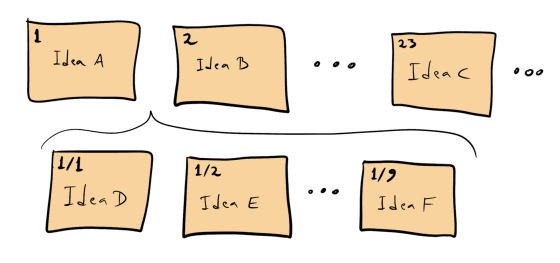
You can also insert additional cards between the newly created cards by adding slashes. For example, to insert new cards between '1/1' and '1/2', number them '1/1/1', '1/1/2', '1/1/3', etc.
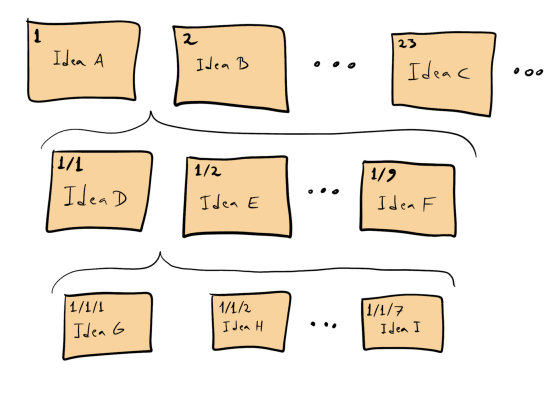
To create a link between two cards, use an identifier. For example, if you want to link card '1/1' to card '1', you can add the number '1' somewhere on card '1/1' and link the cards however you like.
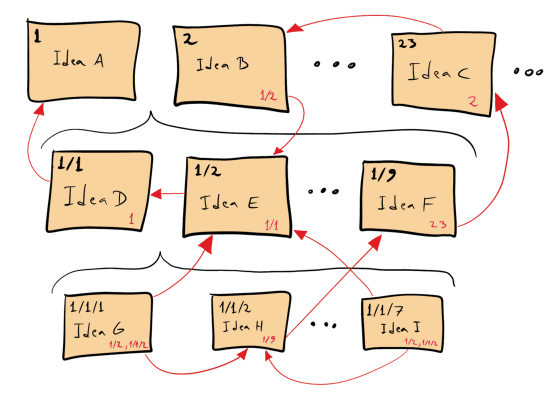
If you want to add a tag to a card, just write the tag on the card itself.
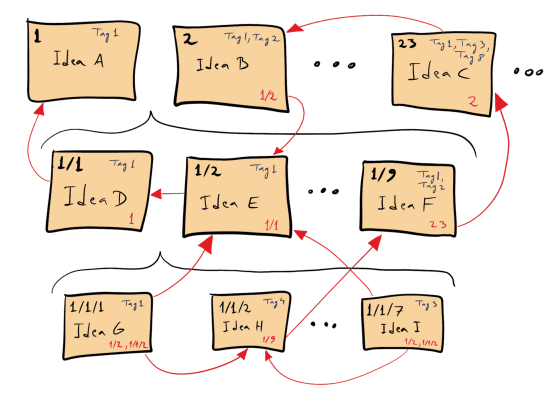
Also, to make it easier to find cards with specific tags, create a separate card for management purposes to list and manage all the tags you have used.
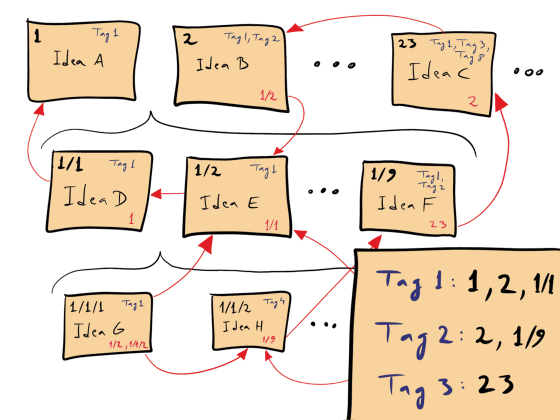
These are the basic steps of Zettelkasten using only paper cards. You can see the cards that Luhmann actually created following the Zettelkasten steps on the following site.
Information ZK I - Niklas Luhmann Archive
https://niklas-luhmann-archiv.de/bestand/zettelkasten/inhaltsuebersicht
◆Zettelkasten web services
Even if you don't have paper and pen, there are applications that allow you to create cards based on the rules of Zettelkasten for free, and Yang lists the following three services. Yang says he mainly uses Roam Research.
Zettelkasten knowledge and information management • Zettelkasten Method
https://zettelkasten.de/
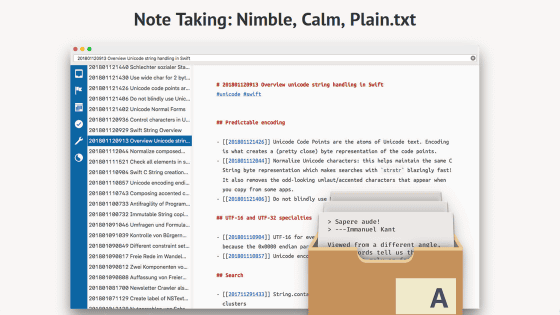
Zettlr | A Markdown Editor for the 21st Century
https://www.zettlr.com/
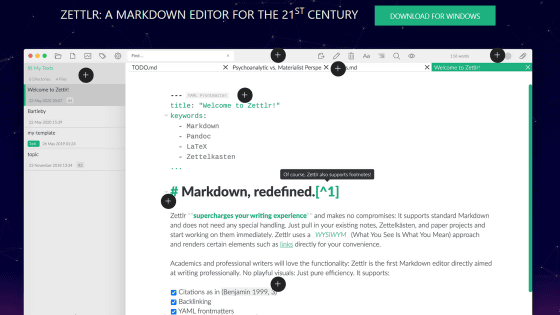
Roam Research – A note taking tool for networked thought.
https://roamresearch.com/
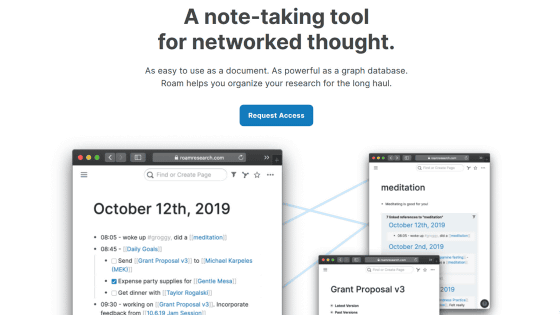
Related Posts:
in Note, , Posted by darkhorse_log







